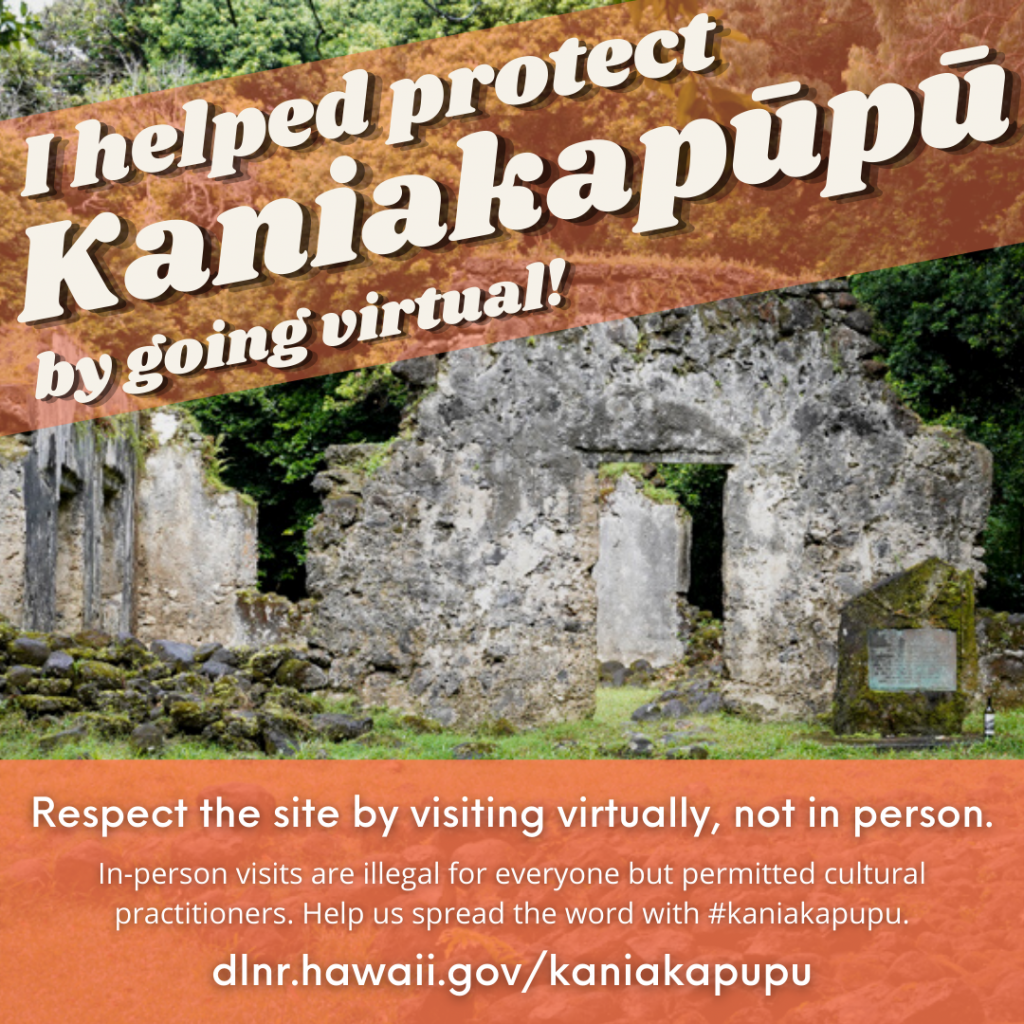Kaniakapūpū Virtual Field Trip

Kaniakapūpū is a wahi pana, a place special to native Hawaiians and to anyone interested in Hawaiʻi’s history or culture. The summer palace of King Kamehameha III is where some of the core components of the Kingdom of Hawaiʻi were developed, including the Declaration of Rights in 1839 and the first constitution in 1840. Kaniakapūpū was also the site of the Lā Hoʻihoʻi Ea (Restoration Day) feast in 1847, and other important events you can learn about in the virtual field trip below. The site is within a restricted watershed managed by the Department of Land and Natural Resources, Division of Forestry and Wildlife.
Planning a visit to Kaniakapūpū?
You may have arrived at this page after searching online for directions to the ruins. You should know that Kaniakapūpū is closed to the public and entry without a permit is illegal. Illegal entry or damage to the site can result in penalties up to $10,000. There are two ways to legally visit the site in person:
- The state constitution protects the customarily and traditionally exercised practices of Native Hawaiians. Cultural practitioners wishing to visit Kaniakapūpū can receive a permit from the Oʻahu office of the Division of Forestry and Wildlife. This permit is free and helps the division understand how many people are visiting the site.
- Volunteer with the caretaker group, ʻAhahui Mālama o Kaniakapūpū. They usually meet once a month to remove weeds and maintain the site. For volunteering information, email the DOFAW Information & Education Coordinator, who will put you in contact with Dr. Baron Ching of the ʻAhahui Mālama o Kaniakapūpū.
Take the Kaniakapūpū Virtual Field Trip
The Division of Forestry & Wildlife has created a virtual field trip to allow people to learn about this important site and why it is closed. We previously did not share information about Kaniakapūpū online but found that people continued to visit illegally after finding inaccurate information and directions online. We hope that by providing this tour, people can find accurate information about access restrictions, learn about why this special place deserves respect, and make the choice to visit only via this virtual field trip. You can learn more in our video news release about the tour.
Please enjoy the tour, which features Dr. Baron Ching of the caretaker group ʻAhahui Mālama o Kaniakapūpū. You can view the field trip in this embedded player, or launch the field trip full screen. When you’re done, please scroll down for our mahalo message and a shareable badge for social media highlighting the benefits of visiting this site virtually instead of in person.
Mahalo, and help us spread the word to protect Kaniakapūpū!
The Division of Forestry & Wildlife extends a huge mahalo to those who visit this site virtually rather than in person. By not visiting this site in person, you are helping to protect an important part of Hawaiʻi’s history and an active part of Hawaiian culture. We would be grateful if you shared a link to this tour with others so that they can do the same. When you share, please use the hashtag #kaniakapupu. Link to share: dlnr.hawaii.gov/kaniakapupu
Collect your badge, or create a virtual selfie
If you’d like, you can also share an image on social media. Putting these images on social media with the hashtag #kaniakapupu is a great way to educate social media photographers who may otherwise only see photos of people visiting illegally and think that they can do the same. You can download and share the image on the left, or you can click on the image on the right to create a virtual selfie using our template at Canva.com. Once you’re on Canva, you can upload a photo of yourself and into the photo frame. DLNR won’t have access to your uploaded photo; your custom design is yours to download and then share with friends via social media. Mahalo!
|
Kaniakapūpū social media badge (right-click to download) |
Virtual selfie! Click to visit Canva.com and upload your own photo. |
Saw Kaniakapūpū on social media or on a travel blog?
Despite the site being illegal to visit, Kaniakapūpū is frequently featured in social media posts, online videos, and even on travel websites. The building is held together with plaster that is nearly 200 years old, and sitting or standing on it to take photos is both dangerous and disrespectful. If you see someone posting illegal photos of Kaniakapūpū online, please direct them to this webpage for information. You can also report illegal activity to the DLNR Division of Conservation Resources Enforcement at 643-DLNR or via the DLNRTip app.


